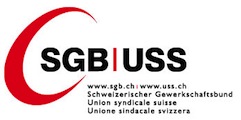Publications des institutions partenaires
Measurement invariance of personal well-being index (PWI-8) across 26 countries
This report examines the measurement invariance of the Personal Well-being Index with 8 items (PWI-8). University students (N = 5731) from 26 countries completed the measure either through paper and pencil or electronic mode. We examined uni-dimensional structure of PWI and performed a Multi-group CFA to assess the measurement invariance across the 26 countries, using conventional...
Institution partenaire
English / 01/01/2017
Measurement of psychological entitlement in 28 countries
This article presents the cross-cultural validation of the Entitlement Attitudes Questionnaire, a tool designed to measure three facets of psychological entitlement: active, passive, and revenge entitlement. Active entitlement was defined as the tendency to protect individual rights based on self-worthiness. Passive entitlement was defined as the belief in obligations to and...
Institution partenaire
English / 01/01/2017
Testing for Approximate Measurement Invariance of Human Values in the European Social Survey
Measurement invariance is a necessary precondition for meaningful cross-country comparisons, and three levels have been differentiated: configural, metric, and scalar. Unfortunately, establishing the most stringent form, i.e., scalar measurement invariance, across groups is difficult. Recently, Muthén and Asparouhov proposed testing for approximate rather than exact measurement...
Institution partenaire
English / 01/01/2017
Value tradeoffs propel and inhibit behavior: validating the 19 refined values in four countries
We assess the predictive and discriminant validity of the basic values in the refined Schwartz value theory by examining how value tradeoffs predict behavior in Italy, Poland, Russia, and the USA. One thousand eight hundred and fifty-seven respondents reported their values and rated their own and a partner’s behavior. Multigroup confirmatory factor analysis supported the...
Institution partenaire
English / 01/01/2017
Driven by aspirations, but in what direction? Performance shortfalls, slack resources, and resource-consuming vs. resource-freeing organizational change
Institution partenaire
English / 01/01/2017
Do casinos pay their customers to become risk-averse? Revising the house money effect in a field experiment
Institution partenaire
English / 01/01/2017
Nonlinear shrinkage of the covariance matrix for portfolio Selection: Markowitz Meets Goldilocks
Markowitz (1952) portfolio selection requires an estimator of the covariance matrix of returns. To address this problem, we promote a nonlinear shrinkage estimator that is more flexible than previous linear shrinkage estimators and has just the right number of free parameters (i.e., the Goldilocks principle). This number is the same as the number of assets. Our nonlinear shrinkage...
Institution partenaire
English / 01/01/2017
The Swiss franc's honeymoon
Starting from the stylized fact that the Swiss franc is a safe haven currency, this paper focuses on the determinants of the Swiss franc during the lower bound regime from September 2011 to January 2015. We describe the Swiss franc as a function of global market risk fundamentals and find that the macroeconomic model outlined by Krugman (1991) describes the EUR/CHF exchange rate well...
Institution partenaire
English / 01/01/2017
An econometric model of healthcare demand with nonlinear pricing
From 2004 to 2012, the German social health insurance levied a co-payment for the first doctor visit in a calendar quarter. We develop a new model for estimating the effect of such a co-payment on the individual number of visits per quarter. The model combines a one-time increase in the otherwise constant hazard rate determining the timing of doctor visits with a difference-in-...
Institution partenaire
English / 01/01/2017
Temporal trends, regional variation and socio-economic differences in height, BMI and body proportions among German conscripts, 1956-2010
OBJECTIVE We analyse temporal trends and regional variation among the most recent available anthropometric data from German conscription in the years 2008-2010 and their historical contextualization since 1956. Design/setting/subjects The overall sample included German conscripts (N 13 857 313) from 1956 to 2010. RESULTS German conscripts changed from growing in height to growing...
Institution partenaire
English / 01/01/2017
A dynamic hurdle model for zero-inflated count data
Excess zeros are encountered in many empirical count data applications. We provide a new explanation of extra zeros, related to the underlying stochastic process that generates events. The process has two rates, a lower rate until the first event, and a higher one thereafter. We derive the corresponding distribution of the number of events during a fixed period and extend it to...
Institution partenaire
English / 01/01/2017
Econometric analysis of ratings : with an application to health and wellbeing
We propose a new non-linear regression model for rating dependent variables. The rating scale model accounts for the upper and lower bounds of ratings. Parametric and semi-parametric estimation is discussed. An application investigates the relationship between stated health satisfaction and physical and mental health scores derived from self-reports of various health impairments,...
Institution partenaire
English / 01/01/2017
Higher heart rate variability is associated with vmPFC activity and increased resistance to temptation in dietary self-control challenges
Higher levels of self-control in decision making have been linked to better psychosocial and physical health. A similar link to health outcomes has been reported for heart rate variability (HRV), a marker of physiological flexibility. Here, we sought to link these two, largely separate, research domains by testing the hypothesis that greater HRV would be associated with better...
Institution partenaire
English / 01/01/2017
Too old to work, too young to retire?
We study whether employment prospects of old and young workers differ after a plant closure. Using Austrian administrative data and a combination of exact matching and fixed effects, we show that old and young workers face similarly large displacement costs in terms of employment in the long-run, but old workers lose considerably more initially and gain later. Effects on wages of...
Institution partenaire
English / 01/01/2017
Testosterone administration does not affect men's rejections of low ultimatum game offers or aggressive mood
Correlative evidence suggests that testosterone promotes dominance and aggression. However, causal evidence is scarce and offers mixed results. To investigate this relationship, we administered testosterone for 48h to 41 healthy young adult men in a within-subjects, double-blind placebo-controlled balanced crossover design. Subjects played the role of responders in an ultimatum game...
Institution partenaire
English / 01/01/2017
Monetary, food, and social rewards induce similar pavlovian-to-instrumental transfer effects
Multiple types of reward, such as money, food or social approval, are capable of driving behavior. However, most previous investigations have only focused on one of these reward classes in isolation, as such it is not clear whether different reward classes have a unique influence on instrumental responding or whether the subjective value of the reward, rather than the reward type per...
Institution partenaire
English / 01/01/2017
Four essays on the economics of communication with strategic and social motives
Institution partenaire
English / 01/01/2017
Contributions to the current debates on the financial markets and on environmental policy in China
Institution partenaire
English / 01/01/2017
Pages
Le portail de l'information économique suisse
© 2016 Infonet Economy












